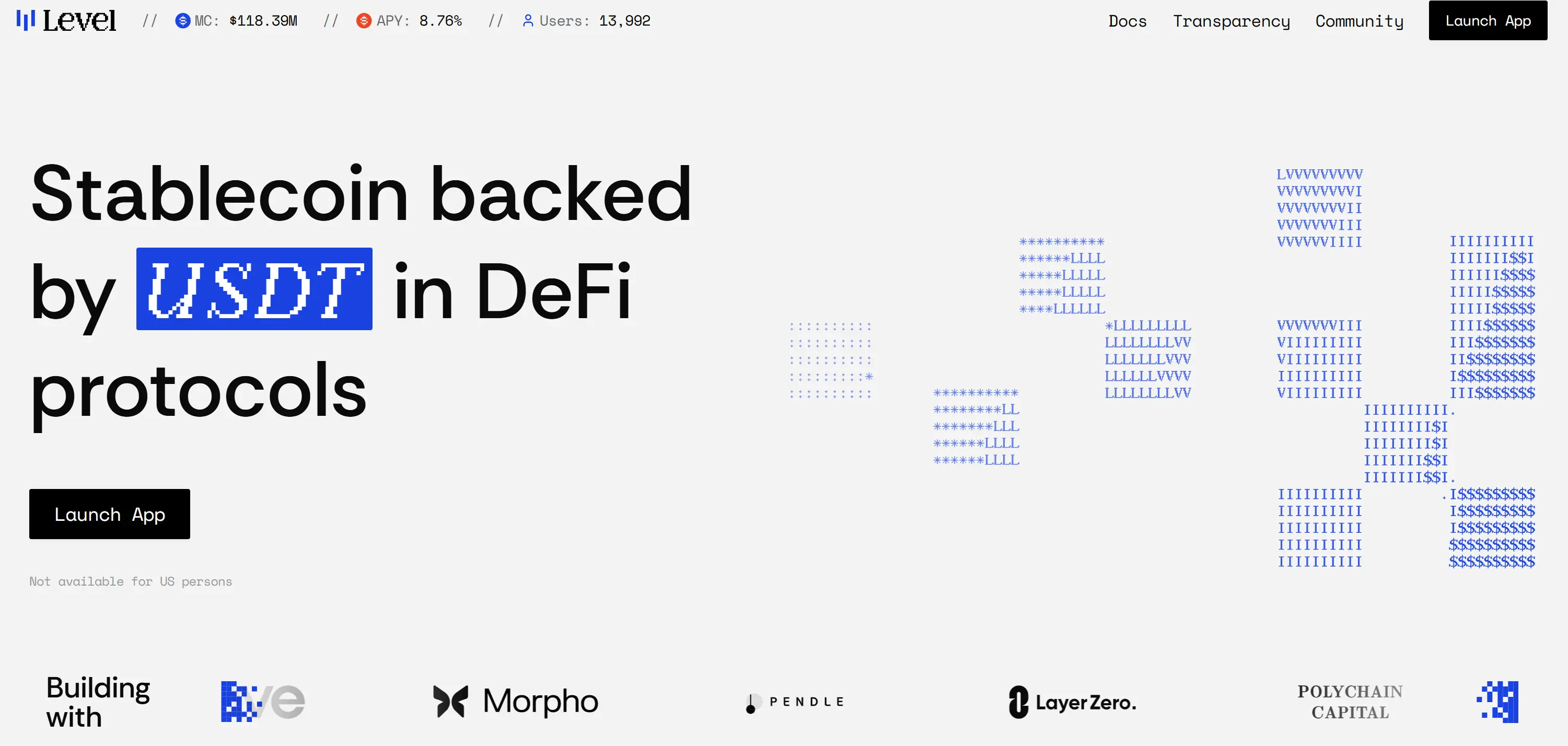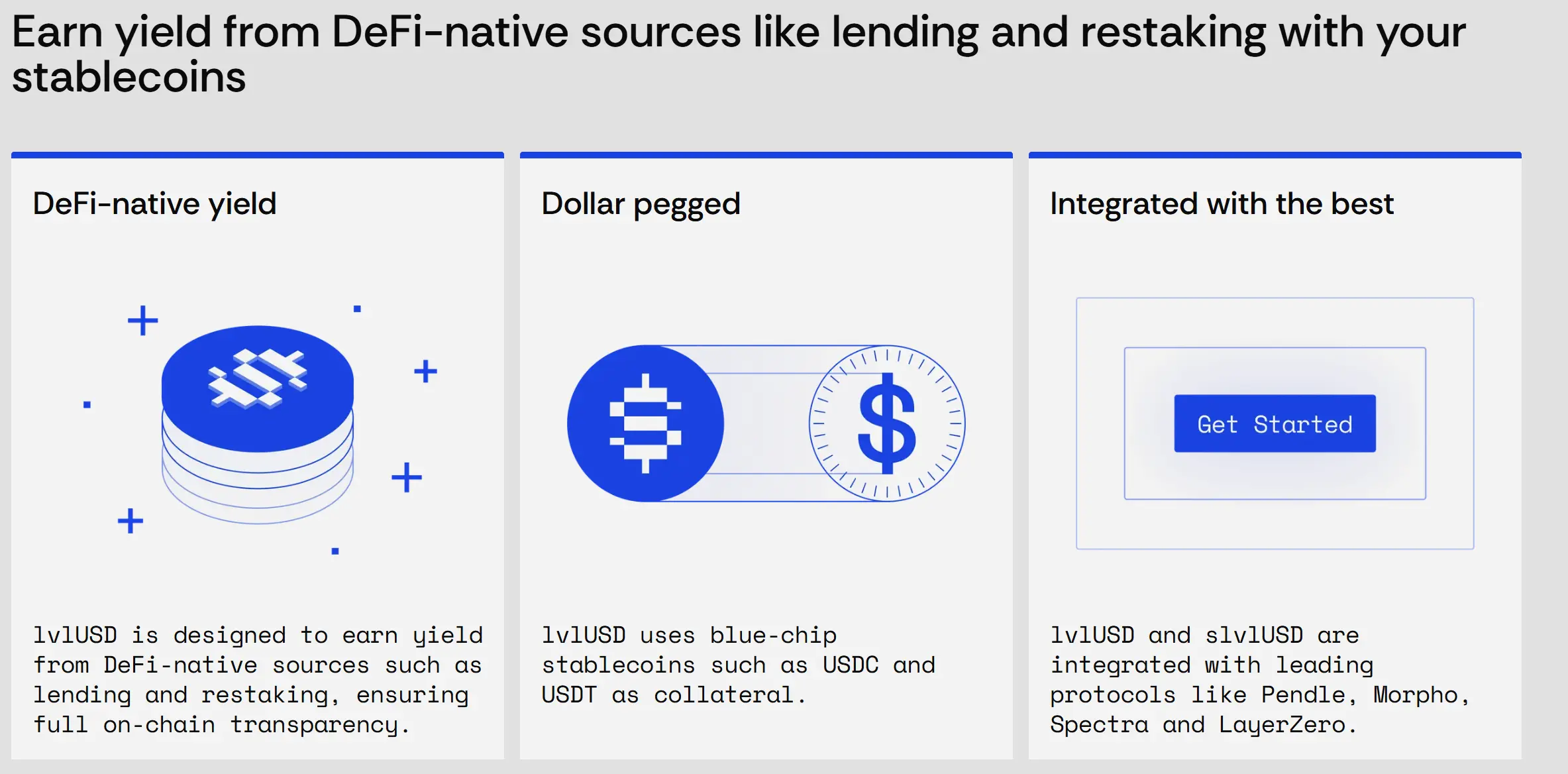Author: Fairy, ChainCatcher
Editor: TB, ChainCatcher
On March 26, the market capitalization of lvlUSD surpassed $100 million, achieving a growth rate of 129% in less than a month. As a stablecoin issued by the stablecoin protocol Level, lvlUSD is starting to gain prominence.
In the stablecoin sector, there is a growing market demand for stablecoins that are both safe and offer considerable returns. Recently, Level has been exploring a new path by leveraging lending protocols to create a highly transparent and composable stablecoin, lvlUSD, while providing risk-adjusted returns.
Level Team Background and Development Status
Level co-founder Kedian Sun graduated from the Wharton School and previously served as an operations manager at Brex and worked at Lazard. Another co-founder, David Lee, has ten years of experience as a computer engineer, having worked as a software engineer at Flexport and Uber, and holds a bachelor's degree in computer science from Columbia University.
Currently, Level has completed two rounds of financing, totaling $6 million. In August 2024, its development company, Peregrine Exploration, announced the completion of $3.6 million in financing, co-led by Polychain Capital and Dragonfly Capital. In March 2025, it completed another $2.6 million financing, led by Dragonfly Capital.

Design of lvlUSD
lvlUSD is fully backed by USDC and USDT and can only be minted permissionlessly through these two stablecoins. USDC and USDT constitute the reserves of lvlUSD, which are used to generate returns in the lending protocol. Additionally, a portion of the lending protocol receipt tokens representing Level's lending positions will be deposited into a re-staking protocol to earn extra rewards.
Earnings Mechanism
Level returns lending earnings to users through the ERC-4626 staking mechanism. After users stake lvlUSD, they will receive slvlUSD, whose value will appreciate as the protocol distributes earnings to the staking contract. lvlUSD and slvlUSD can be freely transferred, traded, exchanged, and used in integrated DeFi protocols.
1.Generation of Lending Earnings
To generate earnings, Level supplies USDC and USDT to blue-chip lending protocols like Aave. Currently, all reserves are deployed in Aave, but these reserves will soon be diversified into other lending protocols (such as Morpho). The receipt tokens from these protocols (like Aave's aUSDC or aUSDT) will be wrapped into yield-generating assets.
2.Earnings Distribution to slvlUSD
Level will distribute the lending earnings obtained by the protocol to slvlUSD (i.e., staked lvlUSD). Therefore, users must stake lvlUSD into the staking contract or vault to receive slvlUSD, representing their share in the vault. As earnings increase, the value of slvlUSD will gradually appreciate.
3.slvlUSD Earnings Higher than Base Lending Earnings
Since all lvlUSD reserves are used to generate lending earnings, but only slvlUSD can earn returns, the earnings of slvlUSD are higher than the base lending earnings. When the staked lvlUSD is lower, the earnings of slvlUSD are higher, and vice versa.
4.Unstaking and Withdrawal
When users unstake, slvlUSD will be burned. Users will receive a corresponding share of lvlUSD based on the ratio of the total amount of lvlUSD held in the contract to the outstanding supply of slvlUSD. After unstaking, users must wait 7 days to withdraw lvlUSD.
Risks Faced by the Level Protocol
According to information from the project's official website, the following risks may be faced when using the Level protocol:
- Collateral Risk: There is a risk of collateral going bankrupt.
- Lending Protocol Risk: The underlying lending protocol may accumulate bad debts.
- Staking Risk: The operator of the staked assets may face penalties, leading to bankruptcy.
- Smart Contract Risk: The smart contracts managing or deploying lvlUSD collateral may have vulnerabilities, leading to the bankruptcy of lvlUSD.
- Operational Security Risk: Certain functions of the protocol (such as emergency collateral rescue functions) are controlled by privileged roles, which may be compromised.
To address these risks, Level has implemented several mitigation measures. For example, Level only accepts USDC and USDT as collateral and has set strict standards for the selection of lending protocols; it enhances operational security by using multi-signature mechanisms and cold wallets to ensure the safety of administrative privileges.

The Level protocol offers new possibilities for the stablecoin sector through its innovative earnings mechanism. However, whether it can break through with its unique earnings model and risk management strategies still needs to be validated by the market.
(This article only introduces early-stage projects and does not constitute investment advice.)
免责声明:本文章仅代表作者个人观点,不代表本平台的立场和观点。本文章仅供信息分享,不构成对任何人的任何投资建议。用户与作者之间的任何争议,与本平台无关。如网页中刊载的文章或图片涉及侵权,请提供相关的权利证明和身份证明发送邮件到support@aicoin.com,本平台相关工作人员将会进行核查。




